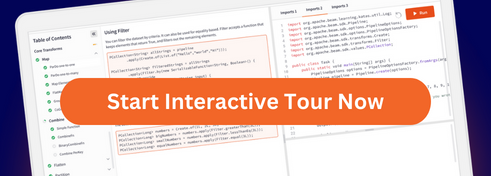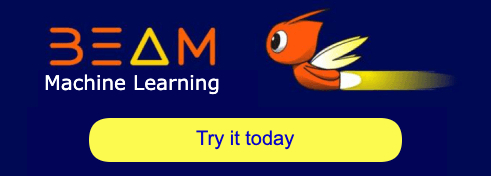blog
2025/06/16
My Experience at Beam College 2025: 3rd Place Hackathon WinnerMarcio Sugar
Introduction: The Spark of an Idea
In 2025, I had the opportunity to participate in the Beam College Hackathon, a fantastic event that brings together students and professionals to explore the power of Apache Beam.
For my project, I built Anomaflow, an anomaly detection pipeline using Apache Beam and Google Cloud Dataflow. It was my first public hackathon, and the experience was both rewarding and creatively energizing. I’m proud to share that Anomaflow earned 3rd place in the competition.
The Project: Building Anomaflow
Goal
The primary objective of Anomaflow was to process host telemetry data from systems monitored by OpenTelemetry agents. The long-term goal is to detect anomalies in near real time, which has important applications in cybersecurity.
Tech Stack
Here’s a breakdown of the technologies used:
- Apache Beam (Python SDK) for pipeline development
- Bindplane Collector & Server for OpenTelemetry data collection and configuration
- Google Compute Engine (GCE) instancess for hosting the Bindplane Server and Collector
- Google Cloud Dataflow for running the Beam pipeline at scale
- Google Cloud Storage (GCS) as the pipeline’s source and sink during the hackathon
- Terraform to provision GCP infrastructure
- Docker for packaging and deployment
The Hackathon Journey: From Streaming Vision to Batch Reality
The Initial Vision
The original plan was to create a fully streaming pipeline: the Bindplane Collector running on GCE would upload telemetry files to GCS, which would trigger notifications via Pub/Sub. These notifications would then initiate processing in a Beam pipeline, with enriched results written to BigQuery for analysis and visualization.
The Pivot
However, working solo during a time-limited hackathon meant I had to be pragmatic. I decided to implement a batch pipeline instead, reading from and writing to GCS buckets. This allowed me to deliver a functional MVP while preserving a foundation that can evolve toward the original streaming vision.
Key Learnings
Although I already had some real-world experience with Apache Beam, the hackathon gave me the freedom to explore new patterns and tools in a low-risk environment. It was refreshing to iterate rapidly, test ideas, and push beyond my daily work scope.
What’s Next for Anomaflow?
Anomaflow is just getting started.
I plan to evolve the pipeline into a true streaming system using Pub/Sub and BigQuery. I also want to explore sliding windows, custom anomaly detection models, and alerting mechanisms. With its modular design and strong foundation in Beam, Anomaflow will serve as a base for several future cybersecurity analytics tools I have in mind.
Watch the demo: https://www.youtube.com/watch?v=dpbOm5ekOTc
Tips for Future Participants
If you’re considering joining Beam College next year:
- Use the mentors! The Beam community professionals volunteering their time are a valuable resource. Ask questions, get feedback.
- Check out the Beam learning resources. They’re super helpful, especially for getting started with the Beam model and runners.
Conclusion
I’m currently a Software Architect and Data Engineer at TELUS Security, where I work on the Cybersecurity Analytics and Software Engineering team. We design data pipelines to detect and respond to threats at scale.
Participating in Beam College was a great way to stretch my skills, meet passionate Beam users, and contribute to a vibrant open source community. I’m excited to see what others will build in future editions!
Latest from the blog
blog & gsoc
2025/10/14
Google Summer of Code 2025 - Enhanced Interactive Pipeline Development Environment for JupyterLab
Canyu Chen
blog & gsoc
2025/09/26
Google Summer of Code 2025 - Beam ML Vector DB/Feature Store integrations
Mohamed Awnallah
blog & gsoc
2025/09/23
Google Summer of Code 2025 - Beam YAML, Kafka and Iceberg User Accessibility
Charles Nguyen



